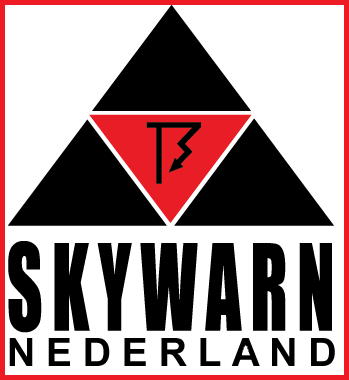
07-06-2019 00:58 | Estofex | m.b.t. 07-06-2019 t/m 08-06-2019

Storm Forecast
Valid: Fri 07 Jun 2019 06:00 to Sat 08 Jun 2019 06:00 UTC
Issued: Fri 07 Jun 2019 00:58
Forecaster: PISTOTNIK
A level 1 and level 2 are issued for Belgium, the Netherlands and Luxemburg mainly for severe convective wind gusts and to a lesser extent for large hail and tornadoes.
A level 1 and level 2 are issued for parts of Germany mainly for large hail and severe convective wind gusts and to a lesser extent tornadoes.
SYNOPSIS
A long-wave trough is in place from Iceland to the Bay of Biscay. A strong mid-level jet rounds its base on Friday, and synoptic lift in its left exit sparks a vigorous surface cyclone that travels from the Bay of Biscay to England. Another outbreak of organized thunderstorms is expected at its cold front.
Further downstream, a broad ridge filled with warm air covers E Europe, Scandinavia and European Russia. The remnants of the long-lived cut-off low over the Balkans have finally dissolved, but very warm and moist air under weak pressure gradient still allows daytime-driven convection over wide areas.
DISCUSSION
... France, BeNeLux, Germany ...
Diurnal heating and evapotranspiration will create some CAPE under steadily increasing vertical wind shear, often exceeding 20 m/s between the surface and 6 km height, in the warm sector of the vigorous cyclone. The cold front quickly crosses France with a pronounced wind shift but without convection in the morning and will be aligned from the French/Belgian border to the Massif Central at 12 UTC. By then, chances for deep convection start to increase as lift and daytime heating erode the initially strong cap.
The overlap of CAPE and strong vertical wind shear would be supportive for a convective line and for supercells alike, and the model pool disagrees somewhat on the storm mode. Following the majority of forecast models and considering the presence of several favoring factors (pronounced linear lift, strong vertical wind shear already at low levels and exceptionally strong front-normal winds with 25-30 m/s at 850 hPa), a squall line is the most likely storm mode over Belgium and the Netherlands, and scattered to widespread severe wind gusts become likely then. Isolated extreme gusts are not ruled out, though the lack of CAPE (probably <500 J/kg) may be a limiting factor. In case more discrete updrafts can be maintained within the line, large hail and one or two tornadoes are not ruled out.
Further SE into Germany, the environment is characterized by more CAPE (probably 500-1000 J/kg) but slightly weaker shear across lower levels (despite equally strong 0-6 km shear). High-resolution models do not show a quick ramp-up of convective initiation before 15 UTC, when the cold front crosses the French-German border. Under a cap and weaker synoptic lift, discrete storms appear more likely in this southern section of the cold front, and they can easily turn supercellular. Large (to isolated very large) hail is the main risk. Rather high cloud bases and steep lapse may also promote severe downbursts, while they mitigate the tornado risk.
The highest CAPE, probably up to 1500 J/kg, will develop over the northern Alpine forelands of SE Germany and N Austria beneath an Alpine elevated mixed layer, but will likely remain untouched due to a lack of synoptic lift. Nonetheless, also the southern tail of the cold front and the "triple point", its intersection with a dryline that pushes northward into the forelands towards evening, should be monitored for a possible initiation of storms with a high potential to turn supercellular. Per Thu 12 UTC model runs, the most likely track of the triple point runs from Basel (Switzerland) to Nuremberg (Germany) in the 15 to 21 UTC time frame, but may still shift north or south by 50-100 km.
Convection will soon run out of surface-based CAPE after sunset and will likely also outrun the strongest wind field by then, which quickly reduces its severe weather potential. However, the overlap of strong vertical wind shear, strong forcing and moderate surface-based instability warrants a level 2 despite the limited time frame for the described severe developments.
Behind the cold front, a broad corridor across W and central France may experience scattered to widespread severe wind gusts in the afternoon, when daytime heating and subsidence by cold air advection mix the 25-30 m/s winds at 850 hPa down to the surface. These gusts are of non-convective origin and therefore not included into ESTOFEX risk levels. A second vorticity maximum can promote scattered thundery showers over NW France, the Channel and S England later on, but their area of occurrence should overlap too little with the strong wind field to justify a level 1.
(alleen de voor NL en omliggende gebieden relevante tekstdelen zijn overgenomen, klik hier voor de volledige forecast, red.)
Verwachtingen/waarschuwingen